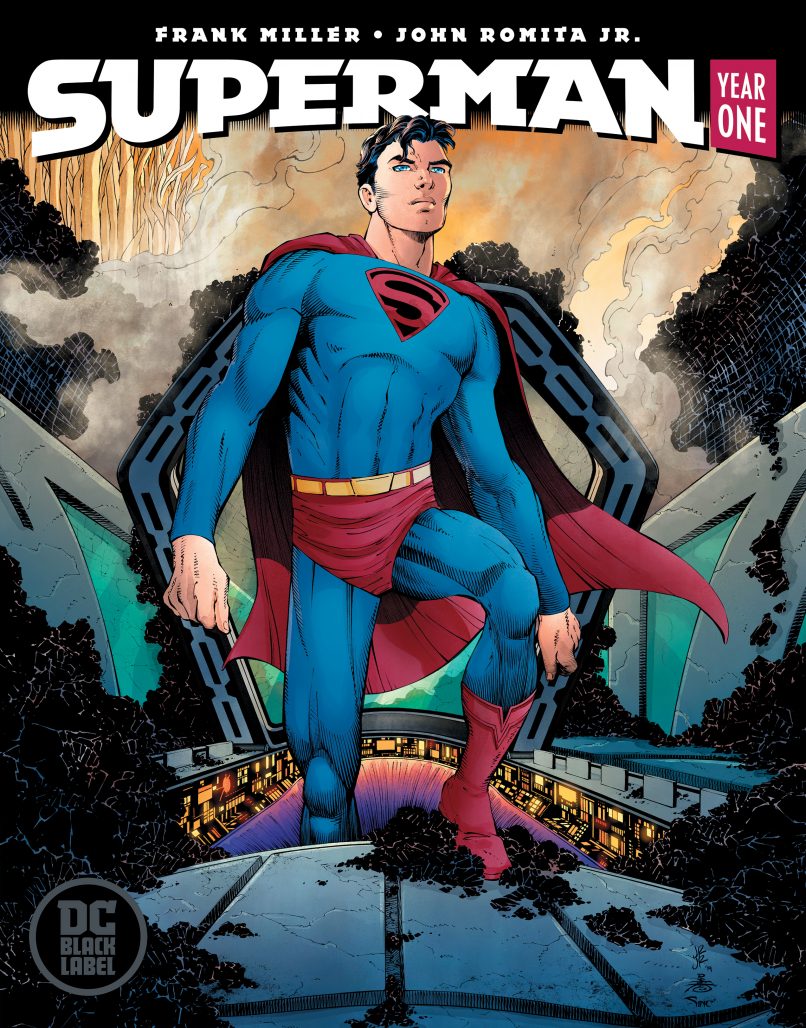
The three-part story will feature subsequent issues in August and October, with the full collection arriving in bookstores this November. The comic, billed as the creators’ “definitive origin story for the Man of Steel” is the third original work to be published through Black Label, following Batman: Damned by Brian Azzarello and Lee Bermejo and Batman: Last Knight on Earth from Scott Snyder and Greg Capullo. Damned is slated to conclude in May following delays (presumably related to censorship issues after the first part of that series showed Batman’s penis) the week before Last Knight launches.
Superman: Year One #1 will hit on June 19. According to press from DC, it will tell a “coming-of-age story” featuring a Clark Kent who’s still young and searching. The thematic core is Superman choosing to be a hero. This sort of story about Superman is quite possibly the most common take on the character. When the book was first announced, it was said that this one and the rest of the label would be outside of continuity.
What’s perhaps most notable here is that Miller’s Batman: Year One (originally a four-issue arc appearing in Batman in 1987 drawn by David Mazzucchelli with colors by Richmond Lewis and letters by Todd Klein) has become the definitive story of the early days of that character. More than 30 years later, Miller will give a similar treatment to another of the publisher’s iconic heroes. This book also marks Miller’s first substantial work for the publisher since he returned to the world of his influential The Dark Knight a few years back for The Dark Knight III: The Master Race, which concluded in 2017 and was comprised of nine issues and supplementary one-shot.
Damned, Last Knight, and Superman: Year One were all initially announced during the rollout of the imprint right around this time last year, although back then the plan was for Superman: Year One was for it to come out in August 2018. Still forthcoming and so far without release dates are Wonder Woman Historia: The Amazons by Kelly Sue DeConnick (Aquaman, Bitch Planet) and Phil Jimenez (Infinite Crisis) as well as another Wonder Woman title from writer Greg Rucka, which is as of yet without an artist. Seemingly delayed indefinitely is The Other History of the DC Universe from screenwriter John Ridley. That book was initially announced without an artist before being solicited as prose/comics format and then removed from the release schedule entirely.
The cover for the first issue is above with the covers for the other two as well as the collected edition below:


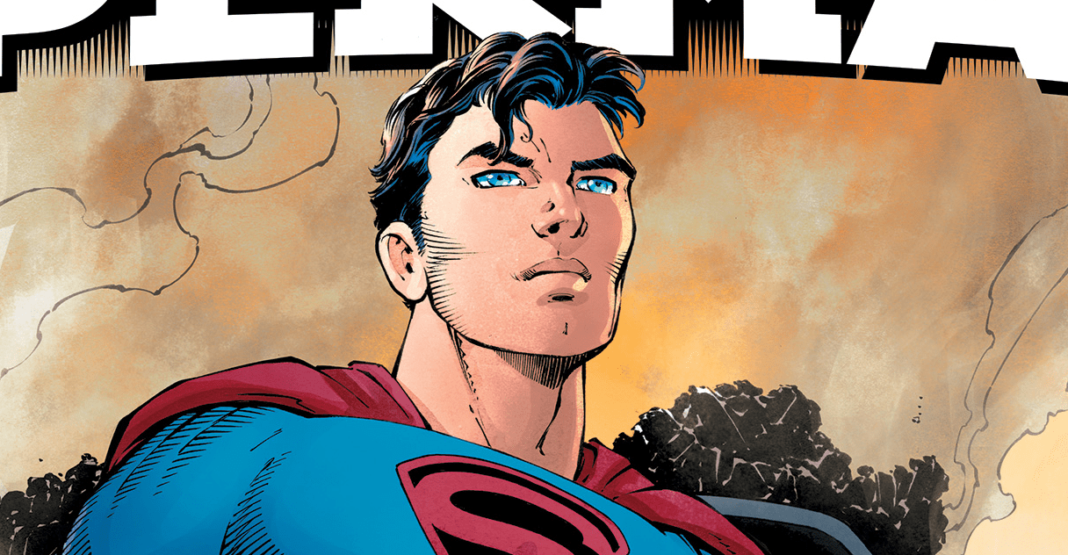
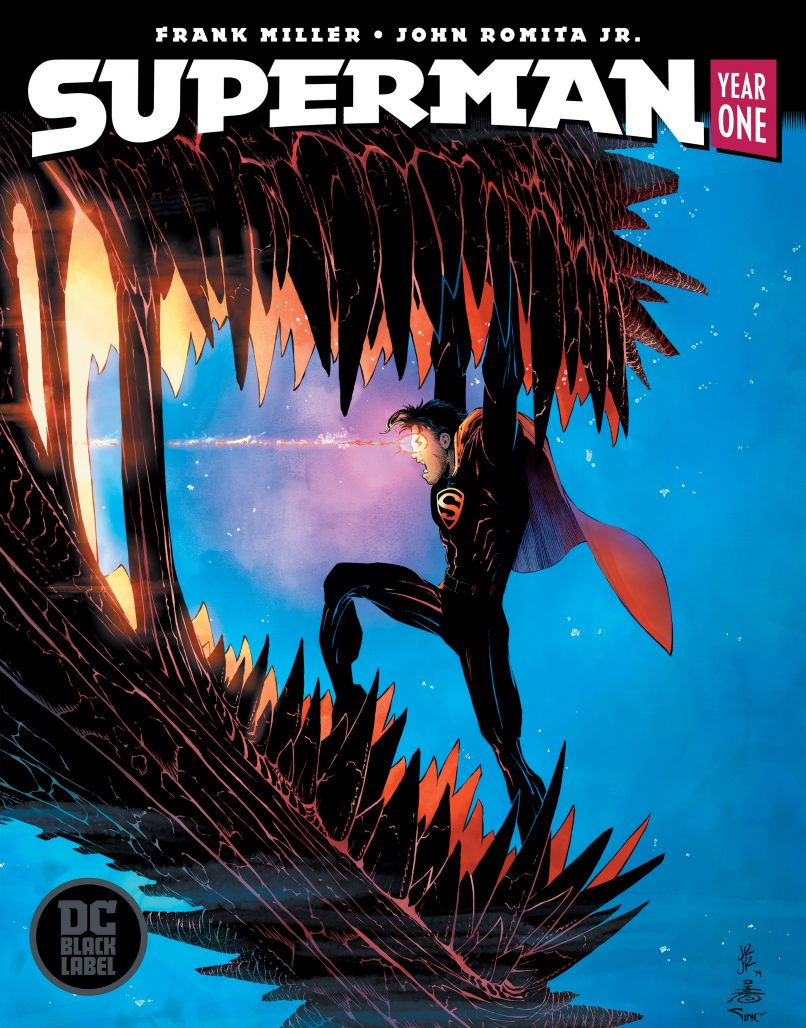
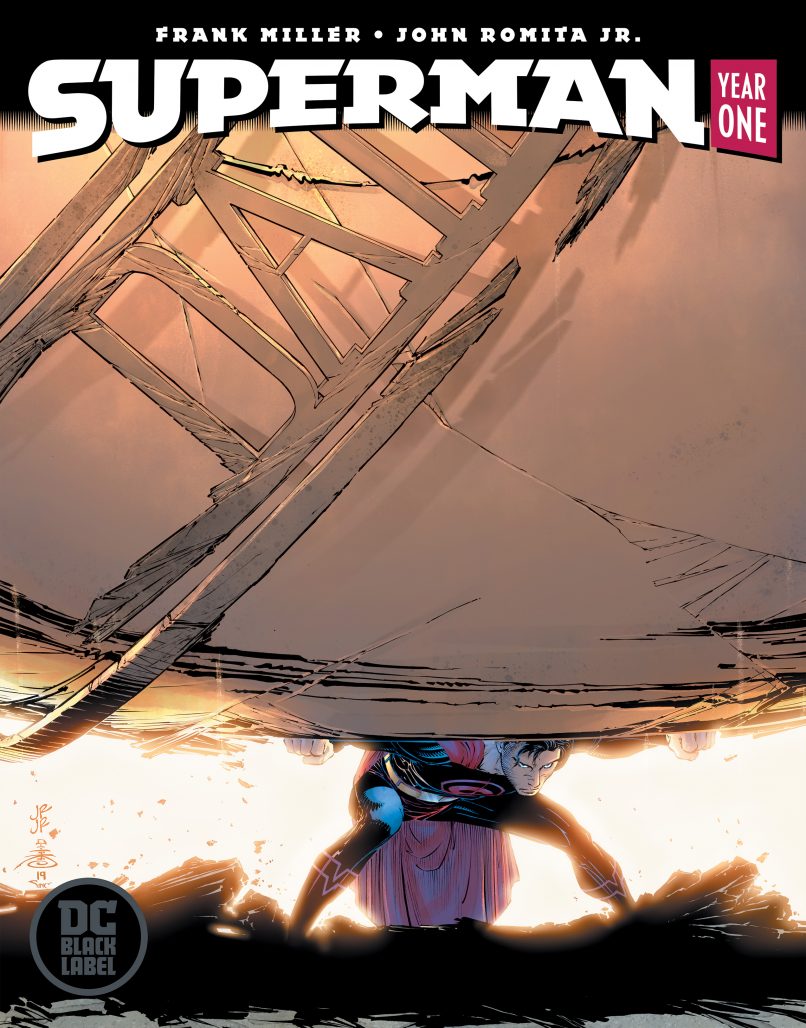
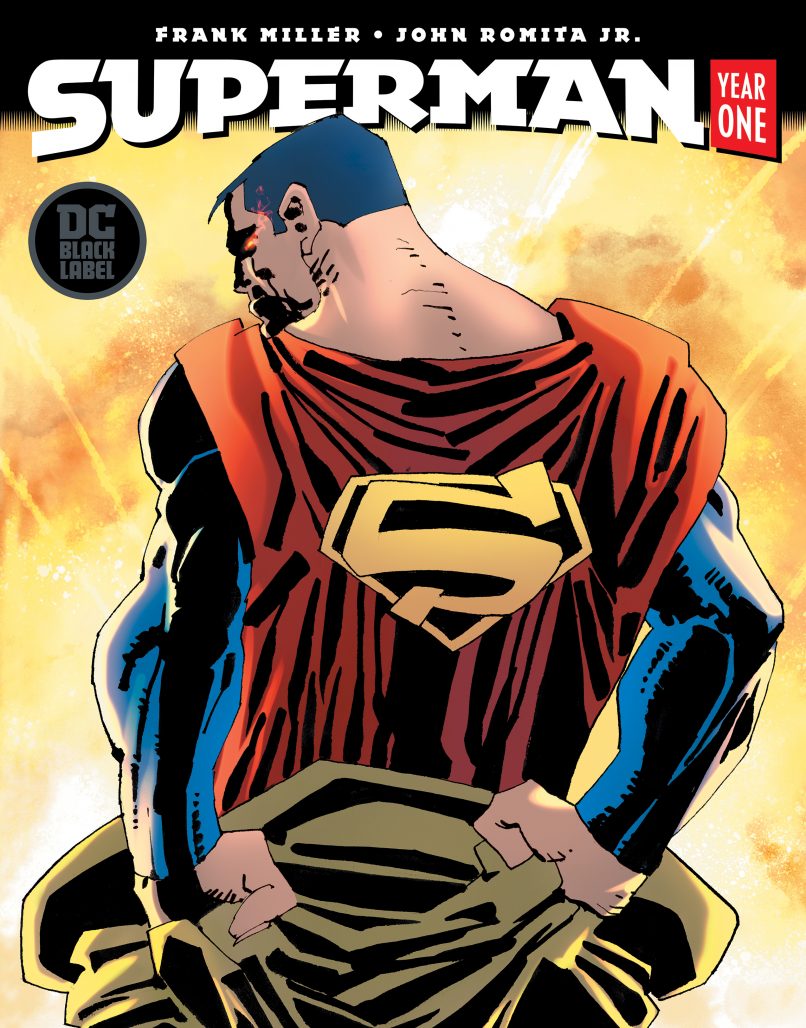





Yay!
If I wasn’t utterly convinced Frank Miller hates Superman, I’d be excited about this.
Ohhhh, no. I’m not falling for this again. The Dark Knight Strikes Again was enough for me.
“I’ll take ‘Combinations of Artists Whose Work is Demonstrably Ugly and Writers Whose Best Days Are Long Behind Him’ for $200, Alex.”
the lettering/typography is AWFUL.
the coloring is pastiche.
This is not a project aimed at attracting paying customers.
This a project done as alms for aging creators
and the tpb will be ordered by libraries all over the country because Frank Miller is considered an auteur worthy of academic study. Frank Miller paved the way for the KELLY SUE DeCONNICKs, the Tom Kings and the Grant Morrisons of the world and even if they find him problematic they have to give him props because Frank said in the mid 1980s: comics are a serious medium that needs to deal with social issues and adult themes if they want to get on library shelves.
How about it’s just getting more output from one of the massively influential and awarded creators in the medium, before he dies. A creator who spent his life in the American comics medium (unlike Alan Moore, who disappeared into the esoteria of erotic and Victorian-era-literary crap fixation, that has little to do with anything and is barely worth reading at the most of times (basically referring to Moore’s publishing through Avatar)). Even if you think Miller’s stuff has changed for the poorer, it’s still massively interesting in a bibliography of work of what he might want to say (particularly at his time of life/age, in experience, etc., and now, at this time. Even a failure is interesting.
More Eisner anyone? More (insert your influential creator here)?
“Alan Moore, who disappeared into the esoteria of erotic and Victorian-era-literary crap fixation, that has little to do with anything and is barely worth reading ”
Just because something is above your reading level it doesn’t mean it’s crap.
Alan Moore is probably the only writer who hasn’t compromise his writing. He doesn’t feel he needs Marvel or DC or superheroes to have a writing career.
He thinks his writing is good enough to stand on its own.
I agree, Alan Moore hasn’t compromised. Definitely. Above my reading level? Nuh-uh.
Lost Girls was alright. A perspective, worth expression. ABC titles, good.
However, everything with Nature and Druid worship, mixed with (ooh, ooh, the taboo (read, in my opinion, banal) Alistair Crowley, or Cthulu-esque Lovecraftian or late 19th Century English allusion to said Nature and Druid worship, as passed off as profound, is poor. To me, it only deserves to be called Romanticism, or Religious mania. Think I’ll read Nietzsche, Blake or any smattering of Philsophers/better literary works, than all the insight Alan Moore has to be offer in his poor, parodic-of-others, delusional, pieces of work. Only interesting in that it exists and an expression in Nature, beyond morality. Further, his characters in the Avatar books I read are not reachable with any usual empathy. Maybe that’s representative as criticism of 19th Century chauvinism. Don’t care, and combined with all the points of the above, I really don’t.
Frank Miller, I respect, for the longevity of his career and dedication to the medium. Alan Moore went off the deep end at some point, and ended up looking-up his own arsehole. Just my opinion. Happy to have a discussion about Nature, or of what you see of merit in the work.
I’ve found Miller unreadable since the early ’90s (and, yes, his art is ugly when Klaus Janson isn’t inking it). But his work in the ’80s was so outstanding — I reread his Daredevil run every year — he belongs in the pantheon with Eisner, Kirby and other greats.
Frank Miller’s art has been intentionally ugly for a long time. Klaus made his drawings better by making his lines more dynamic and fixing some of his bad drawing. Frank is not a great inker but he insists that he can do it himself just like he insists that Alex Sinclair color all his work with the slick polished approach that would suit an artist with a less crude style.
Alex Sinclair is the modern equivalent of liquid! Well suited for artists like Jim Lee but not for artists with a rougher style like Frank Miller or John Romita.Jr.
Bad art, bad coloring, bad writing. and a crummy logo. Yep, Frank, the auteur, is showing real dedication to the comics medium.
In contrast, much of Alan Moore’s at Avatar work fits the vein of what other writers have written for the publisher. e much better than anything Frank Miller has been associated with in recent history. Alan Moore has produced more work than Frank has in the last 20 years and often at much higher quality than what Frank has. The two are not even comparable in terms of dedication.
I don’t this hollow praise for a person I know for fact many in what Lydia White would call the “comics community” dislike .Frank as a person and as a creator.
There’s a lot of tongue-biting going on here.
There’s a lot of assertion there, and little critical analysis. First you insult me, and now, have it repaid. It is you that has the deficit in wider reading, and how to read (which is what one might really learn in an education). So, no discussion of the merits of Moore’s sole work over the last decade or so? OK.
As ever, without any details to analyse and discuss (because of your lack of provision), I’ll just have to state your assertions are a matter of taste. You obviously don’t like FM, I presume (because of your lack of provision), for his politics (you’ll have to tell me), commentary on DC superheroes (you’ll have to tell me), distinctive artistic style? OK. That’s all a matter of taste.
I think FM’s work is sophisticated, and I definitely include Sin City and Dark Knight series, in all the areas mentioned. For sophisticated reasons that I can identify and discuss. Miller’s is a perspective and voice (which you ride all over, because of your taste). That’s all it is. And it’s actually very valuable, in any discourse, for a POV to be there.
I do want to address this directly though: I think what Miller did with B&W art in Sin City is AMAZING, and groundbreaking. Freeing the form, his chiariscuro is influential to many. So, totally disagree with you (a matter of taste)
Then, we can talk about Miller’s cultural importance in continuing from his influences; Mickey Spillane and Will Eisner. They’re massive cultural touchstones to have continued from. Sorry you don’t like his writing, but Miller plugs into a massive cultural vein of noir held by many that actually do like it, either cathartically or not (and please check a Literary Dictionary on the notion of catharsis because I think it might be ‘beyond your reading’). I think Robert Rodriguez or Quentin Tarantino might just like him, as examples. Again, also, Miller’s Right-wing considerations of patriotism, vigilantism (particularly pertinent with superhoes, I and everyone else would think), and other criticisms are very worthwhile in an educated DISCOURSE. Nothing more than your frank inability to have even considered this paints you as, well… what was it… Oh: ‘a bit beyond your reading level’ (?)
Care to respond to my (now) insults (and a hell of a lot more specific analysis than you god-damned provided)?
All your hollow praise ignores the reality that his work has been universally considered bad since 2002.
dk2, which I actually thought was the last readable comic he did. He’s just not good, anymore.
Holy Terror was bad.
All Star Batman was bad.
Xeres was bad.
You cannot evaluate his current work by thinking of what a great job he did on Daredevil in 1981 or 1993.
“I do want to address this directly though: I think what Miller did with B&W art in Sin City is AMAZING, and groundbreaking. Freeing the form, his chiariscuro is influential to many. So, totally disagree with you (a matter of taste)
Then, we can talk about Miller’s cultural importance in continuing from his influences; Mickey Spillane and Will Eisner. ”
Miller was not the first high profile artist to do noir in comics.
Frank merely” steals from the best”, as he puts it himself, artistically.
bit.ly/2HB5VZX
Secondly, the upcoming generation of comics creators despise things like noir comics or Mickey Spillane. I’ve already seen them turn against Howard Crumb.
bit.ly/2Hs8wpD
bit.ly/2Jm3EnI
and we all know what they think Frank’s magnum opus, Sin City.
Frank’s “cultural importance” is in decline and will approach zero when the last critic who remembers how groundbreaking dkr was for comics being accepted by academia, retires.
Yeah, ‘cos Ed Brubaker has no interest in noir, and neither did Darwyn Cooke (Parker, if you didn’t get that), or Rick Remender, or anyone else because I’m just rattling these off the top of my head. And don’t be selective; there’s a whole industry of novels and movies with noir, that you seem to object to. Noir, in all its forms, is going nowhere, and the fact that you don’t understand a basic literary speaks reams…
Sparkling analysis once again. ‘It was bad’. ‘It was bad’. Sparkling, and so well read!
I would see more Miller than most everything on the stands, so; matter of taste.
“eah, ‘cos Ed Brubaker has no interest in noir, and neither did Darwyn Cooke (Parker, if you didn’t get that), or Rick Remender, or anyone else because I’m just rattling these off the top of my head. And don’t be selective; there’s a whole industry of novels and movies with noir, that you seem to object to”
those guys aren’t upcoming–they are established or dead,
people who who enjoys noir stuff are white people in their 40s and up.
Yeah, I can see that genre getting a lot of love in the future.
A genre that was a product of a very specific time and a more homogeneous society.
It will be saved , just like Jazz was, as an African American artform, a symbol of diversity, by philanthropists,, after it becomes unprofitable.
“I’ve already seen them turn against Howard Crumb.”
I assume you mean Robert Crumb? I think his best work is still held in high esteem by most comics scholars — if not by feminists (for understandable reasons).
The first volume of “Sin City” (1991-92) was the last Miller effort I sort of liked. I thought it was an interesting experiment, but I had no interest in reading six more volumes. And I didn’t read them.
His later work I did try to read, such as Holy Terror, DKR2, 300, and the All Star stuff, was utterly awful.
“people who who enjoys noir stuff are white people in their 40s and up.”
Hey, us old-timers need SOMETHING to read! We’re not gonna shell out a fortune for Marvel and DC’s annual reboots, relaunches and crossovers.
“Yeah, I can see that genre getting a lot of love in the future. A genre that was a product of a very specific time and a more homogeneous society.”
Film professors say their students respond to noir more strongly (and more positively) than to any other kind of movie made in the ’40s and ’50s. It’s not just white guys over 40 who like it.
“You cannot evaluate his current work by thinking of what a great job he did on Daredevil in 1981 or 1993.”
I don’t think anyone was doing that.
Artistic decline is not unique to Frank Miller. Most of the work produced by Jack Kirby and Steve Ditko after the early ’70s was crud. That doesn’t invalidate the great work they did earlier in their careers, which is still worth reading. And Miller’s work before the mid ’90s is worth reading.
OK. The only reason I’m continuing this is that I find you so offensive.
Noir is transmutable and adaptable, and it serves a specific literary function. That function is imminently valuable, and will continue to exist no matter your protestations. So, some examples of Noir:
Memento; The Matrix; The Terminator; Blade Runner, & 2049; Brick; The City and the City by China Melville, as a specific example; The Girl with the Dragon Tattoo; all Scandi noir; Canadian noir, such as Cardinal; Bosch; all detective fiction; and arguably, to me, Logan. Rucka; Dennis LeHane; (the list continues…) Just some examples
…and then, for what you have to say to have happened, you’d need a widespread reappraisal and condemnation of classics, like Chinatown; LA Confidential; Bogart movies. Forget their value in the popular consciousness, and the means by which an applauded film like Chris Nolan’s Memento would not be what it is.
Noir has something essential to say about society, and exists as a critique on the society it represents. Any English Literature course will cover this. As a literary form and genre, it is vital. To be discovered, renewed by generations of discerning appreciators of fiction. Adults, in fact.
None of your argument addresses this function of literature which, I assure you, those with feminist sensibilities (because I assume that’s your argument/concern, because you haven’t actually explicitly identified your points of analysis yet) completely crave. Intelligent and sophisticated fiction.
Re Frank Miller: the title from Frank Miller, in Sin City, is a little on the nose, but the text continues and deals in noir’s function, and exists as a criticism on the society it represents.
And, by the way, I never said Frank Miller was the progenitor of anything. He ‘tapped into a vein’; by definition, that vein had to have existed previously. Represent me right will you?
See much reason in the current context as to why noir might continue to be utilised and exist as a criticism/indictment on the society the work represents???
The textual value of a work of Art does not exist in a vacuum, but with material and discursive links to the society it was a product of. Denying things in blanket fasion is a denial of ideas and the reason as to why the idea exists.
Se7en; Clint Eastwood movies… I mean, this just keeps going on, and on…
Denmark TV’s The Bridge; The Killing…
Yes, film noir is not confined to the 1940s and 1950s. It has been updated to the ’70s (Night Moves, Hustle, Dirty Harry), the ’80s (Sharky’s Machine, 48 Hours) the ’90s (Seven, Bad Lieutenant, Pulp Fiction) and the future (most obviously in Blade Runner).
Noir is a style and an attitude that is endlessly adaptable. It doesn’t even have to be set in darkness. There’s at least one great noir filmed largely in bright sunshine: Miami Blues (1990).
LOL. Forget about the creative team. Remember that this was APPROVED BY DC COMICS. Birthright! Secret Origin! Earth One! And now… Year One! ‘Cause.. you know… Superman’s origin!!! It was needed :D
God, there is NOTHING LEFT.
Comments are closed.